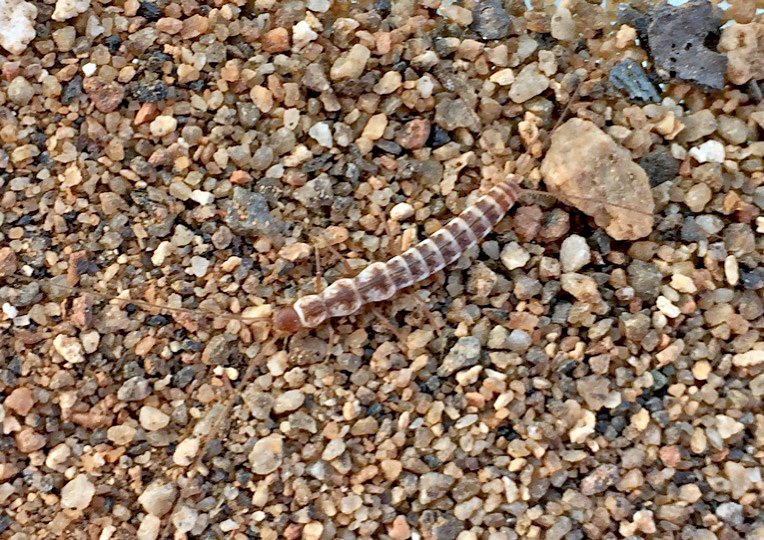
It is considered the driest desert in the world – but insects even live in Chilean Atacama, researchers report. They are representatives from the group of little fish (Zygentoma), which also include the notorious silver fish, which we whiz through many a bath. However, the closest relatives of the much larger Atacama fish live in the distant North African Arabian deserts. The common ancestors of these animals may have already lived on the primary continent of Gondwana, the researchers say.
As is well known, life also masters extreme challenges – some animals and plant species survive even in the barren desert areas of the world. “Many of these regions are often not that hostile to life,” says Reinhard Predel from the University of Cologne. “Most deserts are home to a highly specialized fauna, and some are even quite diverse.” But there are also particularly barren deserts among the deserts: It becomes critical where no plants can live at all and the wind and no organic material from neighboring areas blowing in. Then even the most sophisticated desert specialists cannot survive.
Existence at the limit
This is exactly what was previously assumed for the core area of the Chilean Atacama Desert. So far, only microorganisms have been found in the soil. Because of its extreme drought and extreme solar radiation, NASA’s Atacama even serves as a model for the surface of Mars. “We therefore discovered the animals rather unexpectedly and by accident,” says Predel. He and his colleague Alvaro Zúñiga-Reinoso succeeded in the discovery as part of the research project “Earth – Evolution at the Dry Limit”, in which scientists investigate the long-term development of landscapes in extreme drought conditions.

As the researchers report, they are insects from the group of so-called fish (Zygentoma). The best-known representatives are the silverfish (Lepisma saccharina). These roughly one centimeter tall speedsters are known for their ability to survive on tiny food particles in our bathrooms. While these “little pets” only grow to around one centimeter in size, the versions from the Atacama, on the other hand, reach up to seven centimeters in length. They also have very long feelers and are extremely agile, the scientists report. They have already identified five different species, all of which belong to the Maindronia fish group.
Mysterious survivor
So far, only three species from this region were known from this region: one from Sudan, one from the Arabian Peninsula and one was previously discovered in Chile. “Obviously, nobody has come up with the idea to run deeper into the desert and search there. After we discovered the first animals in the Atacama, there was no stopping. Apparently they are the desert animals par excellence, ”says Predel. So far, however, the researchers have not yet been able to say anything about the physiological adaptations of the five fish species to the extreme conditions in the core area of Atacama. However, they suspect that the animals are harvesting a biofilm from microorganisms that is invisible to the naked eye. They now want to investigate this suspicion more closely and also the question of why the animals have a feeler system that is reminiscent of cave animals.
However, it seems clear that their adaptations to the extreme conditions go back very far. Since the species from the Atacama are very similar to the well-known Maindronia from Arabian regions, it is obvious that the animals could have lived the same way millions of years ago on the southern continent of Gondwana as they do today. Conversely, this could mean that there have always been extremely dry habitats somewhere in South America and the North African Arab region for more than 100 million years that have ensured the survival of Maindronia species. “Such living fossils also tell us something about the development of our earth,” Predel concludes.
Source: University of Cologne, technical article: Global and Planetary Change, doi: 10.1016 / j.gloplacha.2019.103007